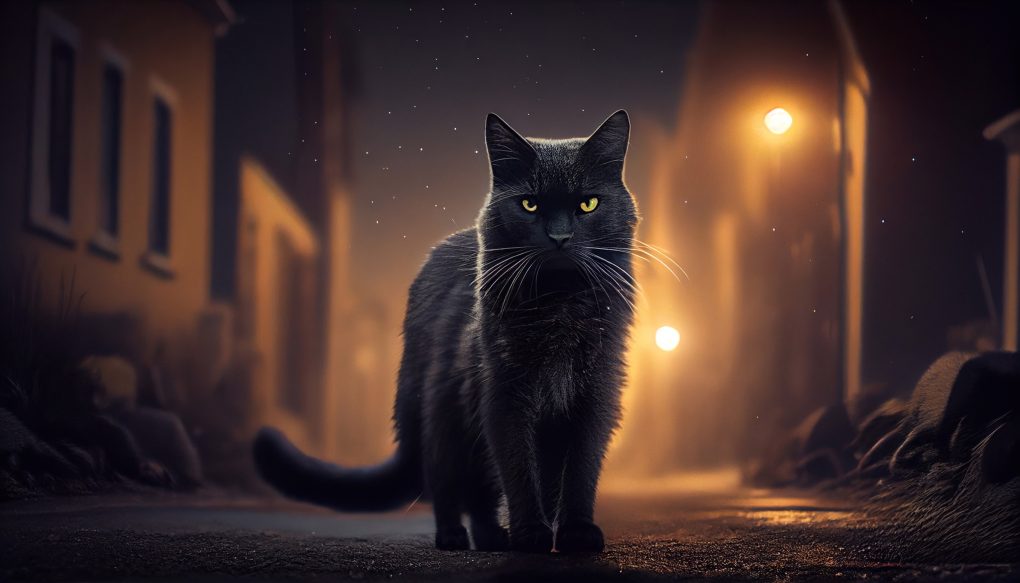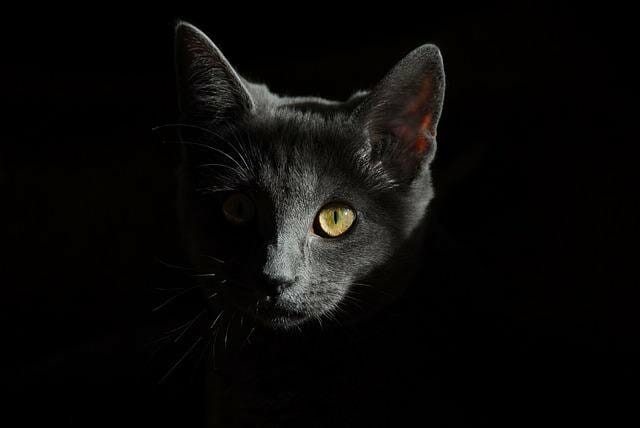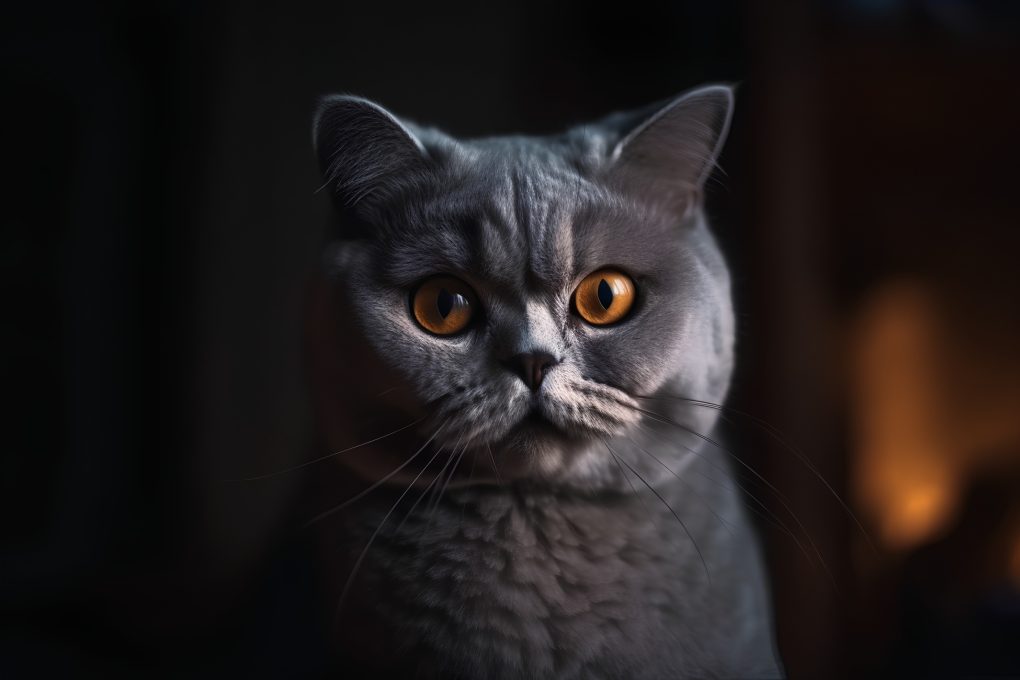Do Cats Have Night Vision: Understanding the Feline Ability to See in the Low-Light Conditions
Yes, cats have excellent night vision. However, they cannot see in complete darkness but very well in low-light conditions. Their eyes are designed to allow more light to enter the retina, and they have more rod cells responsible for detecting light in low-light conditions.
They also have a reflective layer behind the retina called the tapetum lucidum, which helps to amplify incoming light and enhance their vision in dim light. Such features allow cats to see well in low-light conditions and are known for their ability to see in the dark.


Cats use their night vision primarily for hunting and navigating. As natural predators, cats rely on their excellent night vision to locate prey, such as small rodents, birds, and insects, which are more active at night. Their night vision also lets them move in low-light conditions without bumping into objects or getting lost. This is especially important for outdoor cats, who must navigate the dark to find their way home.
Table of Contents
Night Vision and the Specialized Visual System of Cats
Large Pupils
Large pupils play an essential role in the night vision of cats. Pupils are the black circular openings in the center of the eye that control the amount of light entering the eye. Cats have large pupils that can dilate (enlarge) and constrict (narrow) depending on the light present.
In low-light conditions, such as at night, the pupils of cats dilate to let in more light, which helps to maximize the amount of light that enters their eyes. Dilation of the pupils is controlled by the muscles in the iris, which is the colored part of the eye. The iris has two muscles working together to control pupil size.
The radial muscles are responsible for dilating the pupil, while the circular muscles are responsible for constricting the pupil. In cats, the radial muscles are highly developed, which allows their pupils to dilate to more than the size of a human pupil.
With larger pupils, cats can gather more light from their surroundings, making it easier to see in low-light conditions. This is important for cats because they are primarily nocturnal hunters and need to be able to see in the dark to locate prey. The increased light sensitivity provided by large pupils also helps cats to detect motion in low-light conditions, allowing them to track prey more effectively.
However, having large pupils also comes with a disadvantage. In bright light conditions, the pupils of cats can become too dilated, which can cause damage to the sensitive structures of the eye. To protect their eyes, cats have a specialized muscle called the retractor bulbi muscle, which allows them to pull their eyes back into their sockets, reducing the amount of light entering their eyes.
High Number of Rod Cells
Rod cells are specialized light-sensitive cells found in the eye’s retina, responsible for detecting light and movement in low-light conditions. Cats have a higher number of rod cells than humans, which helps to enhance their night vision.


The high number of rod cells in cats’ eyes allows them to gather more light, making it easier to see in low-light conditions. Rod cells are more sensitive to light than other cells in the retina, and their high number in cats’ eyes means they can detect even the smallest amounts of light.
This means that cats can see in almost complete darkness, making them highly effective hunters and allowing them to navigate their environment easily. The rod cells in cats’ eyes are also highly sensitive to motion, an important adaptation for nocturnal predators like cats.
This sensitivity to motion allows cats to detect movement in their environment and track prey more effectively, even in very low light conditions. For example, cats can see the movement of a mouse scurrying across a dark room, even if the mouse is too small to be seen clearly.
Furthermore, the high density of rod cells in cats’ eyes is accompanied by a higher density of cells in their brain’s visual cortex, which is responsible for processing visual information. Cats can process visual information more quickly and accurately than humans, enhancing their ability to see in low-light conditions.
Tapetum Lucidum
Tapetum lucidum is a specialized reflective layer at the back of the eye in many nocturnal and crepuscular animals, including cats. The tapetum lucidum acts as a mirror, reflecting any light that enters the eye back through the retina, increasing the amount of light that the photoreceptor cells, including the rod cells, receive. This reflection of light enhances the cat’s night vision in several ways.
Firstly, the reflection of light by the tapetum lucidum amplifies the intensity of the light that enters the eye. This enhances the cat’s ability to see in low-light conditions, making navigating and hunting in the dark easier.
Secondly, the reflection of light by the tapetum lucidum allows the cat’s eyes to recycle and reuse the light that enters the eye. This means that if the light entering the eye is not initially absorbed by the photoreceptor cells, it can be reflected and absorbed on a second pass through the retina. This light recycling further enhances the cat’s ability to see in low-light conditions.
Finally, the tapetum lucidum provides cats with a unique and distinct feature known as “eyeshine.” When the tapetum lucidum reflects light, it causes the eyes to glow, giving cats a distinctive green or yellowish glow in the dark. This eyeshine allows cats to be more easily seen by humans and other animals in the dark, which can be useful for communication and signaling.
Specialized Muscles


Cats have specialized muscles in their eyes called the “extrinsic eye muscles,” which help to enhance their night vision by allowing them to quickly and accurately focus on their prey in low-light conditions. These extrinsic eye muscles are responsible for moving the eyes in different directions and are highly developed in cats.
This allows them to rapidly adjust their gaze and focus on prey, even in dim lighting conditions. For example, if a cat is stalking a mouse in a dimly lit room, it can use its extrinsic eye muscles to adjust its gaze quickly and focus on the mouse as it moves, allowing it to track its prey accurately.
Furthermore, cats also have a specialized “superior oblique muscle,” which allows them to tilt their eyes slightly downward when looking at objects close to the ground. This tilt enhances their depth perception and allows them to more accurately judge the distance to their prey, which is especially important for nocturnal predators that need to strike quickly and accurately in the dark.
Combining these specialized extrinsic eye muscles and the superior oblique muscle allows cats to quickly and accurately focus on their prey in low-light conditions, giving them a significant advantage when hunting at night. In addition, these muscles also allow cats to maintain their balance and adjust their gaze while moving, which is important for navigating their environment in low-light conditions.
